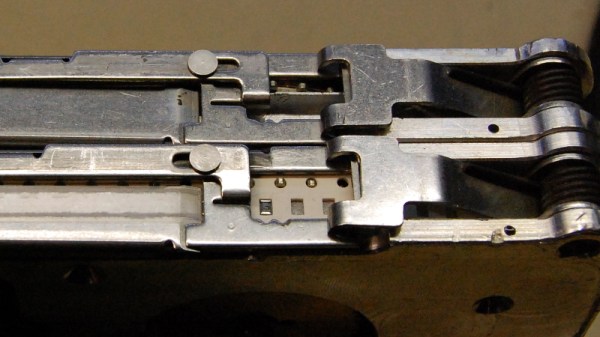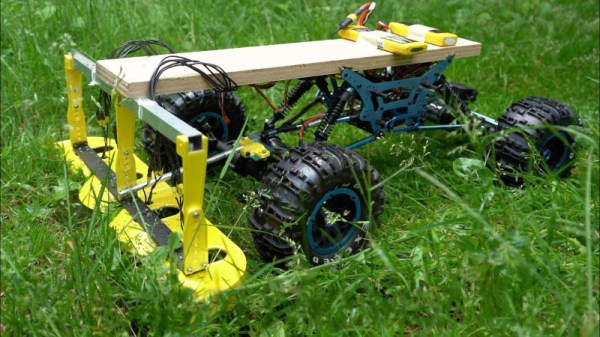Many of Hackaday’s readers will be no stranger to surface mount electronic components, to the extent that you’ll likely be quite comfortable building your own surface-mount projects. If you have ever built a very large surface-mount project, or had to do a number of the same board though, you’ll have wished that you had access to a pick-and-place machine. These essential components of an electronics assembly line are CNC robots that pick up components from the reels of tape in which they are supplied, and place them in the appropriate orientation in their allotted places on the PCB. They are an object of desire in the hardware hacker community and over the years we’ve seen quite a few home-made examples. Their workings are easy enough to understand, but there is still much to gain by studying them, thus it was very interesting indeed to see a friend acquiring a quantity of surplus Siemens component feeders from an older industrial pick-and-place machine. A perfect opportunity for a teardown then, to see what makes them tick.
Day: December 16, 2020
3D Printing With VHS Tape Filament
If you have a pile of old VHS tapes collecting dust in your attic or basement that you know you’ll never watch again, either because all of those movies are available on DVD or a streaming service, or because you haven’t had a working VCR since 2003, there might be a way of putting them to good use in another way. With the miles of tape available in just a few cassettes, [brtv-z] shows us how to use that tape as filament for a 3D printer.
The first step of the build is to actually create the filament. He uses a purpose-built homemade press to spin several tapes into one filament similar to how cotton or flax is spun into yarn. From there the filament is simply fed into the 3D printer and put to work. The tape filament needs to be heated higher than a standard 3D printer filament so he prints at a much slower rate, but the resulting product is indistinguishable from a normal print except for the color. It has some other interesting properties as well, such as retaining its magnetism from the magnetic tape, and being a little more brittle than PET plastic although it seems to be a little stronger.
While the VHS filament might not be a replacement for all plastic 3D prints, it’s still a great use for something that would likely otherwise head straight to the landfill. There are some other uses for this magnetic tape as well, like if you wanted to build a DIY particle accelerator.
RC Lawn Mower Cuts With Impunity
Grass is a lovely thing to have, but unfortunately it tends to grow excessively long if left unattended. Obviously, one can use a regular lawn mower, but [Daniel] of [rctestflight] decided to build something remote-control instead. (Video, embedded below.)
To get started, [Daniel] fitted X-acto blades to a brushless outrunner motor, and tested their ability to cut grass. Satisfied with the performance, he built a trailer to tow behind an RC tank mounted to such a setup, with some success. With the concept beginning to bear fruit, he went with a clean sheet design for maximum performance.
The final build relies on an RC rock-crawler chassis, fitted with a brushless motor using field oriented control for maximum torque at low speeds. This allows the RC mower to slowly push through the grass without overwhelming the cutter heads. As for the cutter heads, the final rig has eight motors, each sporting two blades to chop down long field grasses with impunity.
[Daniel] notes that it’s remarkably fun to cut the grass in this way, and is surprised not to have seen more builds in this area. (Editor’s note: he needs to read more Hackaday.) Of course, we’ve seen plenty of autonomous builds, too.














